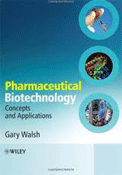


Author Name = S. B. Primrose
Realeased On = Releases On 1991
This text is a totally updated and rewritten version of the author's successful present Biotechnology which, since book in late 1987, has sold over 3,500 copies. Once more the author has adopted a uniquely broad view of the topic which embraces all aspects of the profitable use of living organisms and their workings.
Genetic engineering, also called genetic modification, is the straight human treatment of an organism's genome using modern DNA technology. It involves the introduction of foreign DNA or synthetic genes into the organism of attention. The foreword of new DNA does not require the use of classical genetic methods; however conventional propagation methods are typically used for the spread of recombinant organisms.
An organism that is generating from side to side the foreword of recombinant DNA is considered to be a genetically modified organism. The first organisms hereditarily engineered were bacteria in 1973 and then mice in 1974. Insulin-producing bacteria were commercialized in 1982 and hereditarily customized food has been sold since 1994.

The most normal form of genetic engineering involves the placing of new genetic material at an unspecified location in the host genome. This is talented by isolating and copying the genetic material of interest using molecular cloning method to generate a DNA sequence containing the required genetic elements for expression, and then insert this build into the host organism. Other forms of genetic engineering comprise gene targeting and knocking out specific genes via engineered nucleases such as zinc finger nucleases or engineered homing end nucleases.